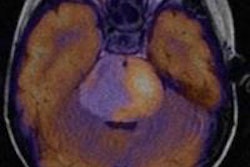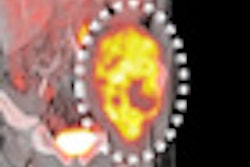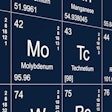SAN ANTONIO - PET/CT can provide an accurate diagnosis in pediatric sarcoma patients, thus avoiding additional radiation exposure from SPECT bone scans, according to a study presented on Tuesday at the Society of Nuclear Medicine (SNM) annual meeting.
Researchers from the University of California, Los Angeles (UCLA) noted in their study that sarcomas are among the most common extracranial solid tumors in children. Approximately 6% of child tumors are bone sarcomas, with some 650 to 700 new cases occurring annually in the U.S. Soft-tissue sarcomas account for approximately 7.4% of childhood malignancies, with 850 to 900 newly diagnosed cases per year.
In addition, the prognosis for metastatic disease, which occurs primarily in the lung, bones, lymph nodes, and bone marrow, is poor. "Five-year survival drops from about 60% without metastases to 20% for patients with distant metastases," said lead study author Dr. Franziska Walter, from UCLA's department of molecular and medical pharmacology.
Radiation exposure
Pediatric patients who are diagnosed with sarcoma undergo numerous imaging tests, with PET/CT used increasingly for staging and restaging these patients. Additionally, many patients undergo technetium-99m methylene diphosphonate (Tc-99m MDP) SPECT scans to detect bone lesions.
"Pediatric sarcoma patients are exposed to low-dose radiation from imaging tests," Walter said. "Therefore, approaches to reduce this radiation exposure are needed."
Walter and colleagues evaluated the diagnostic accuracy of Tc-99m MDP bone scintigraphy and FDG-PET/CT for detecting malignant bone lesions, comparing the techniques separately and side by side. The study included both a patient-based and case-based analysis, with the case-based analysis added to the study because some pediatric patients received more than one imaging exam.
The researchers retrospectively reviewed patients who underwent the PET/CT and Tc-99m MDP bone scans between January 2006 and February 2010. Patients accepted into the study had biopsy-proven sarcoma and were less than 18 years of age at the time of diagnosis. Their scans were performed within one month of each other and there were no treatment changes between the imaging exams.
The study included 29 patients (23 males and six females), with an average age of 12 years, ranging from 8 to 16 years. Eight patients had soft-tissue sarcoma, while 21 had bone sarcomas (nine cases of osteosarcoma and 12 of Ewing's sarcoma).
A total of 39 paired scans were also acquired. Five patients were scanned twice, and two patients were imaged either four or five times. The mean interval between the scans was four days, with a median time of one day.
The results were presented in a random sequence to the readers: two nuclear medicine physicians and one pediatric radiologist. After separate and side-by-side interpretation, the lesions were rated on a five-point scale, with 1 representing a benign lesion and 5 as malignant.
The analysis was conducted for all bone lesions, and a diagnosis was formed for every patient study.
Results
The researchers found that PET/CT was negative in 19 cases and positive in 20 cases. By comparison, the bone scans were negative in 24 cases and positive in 15 cases. In the side-by-side review, readers determined 20 cases were negative and 19 cases were positive.
In the researchers' patient-based review, 12 (41%) of 29 patients had primary bone lesions and one individual had metastatic disease to the bone. PET/CT identified all 12 of these patients (100%), while the Tc-99m MDP bone scans identified 10 (83%) of the 12 patients with primary lesions and the one patient with metastases. In the side-by-side review, 11 (92%) of the 12 patients with primary bone lesions were identified, as was the one patient with bone metastasis.
This leads to sensitivity, specificity, and accuracy of 100% for PET/CT, Walter said, while the MDP bone scan had sensitivity of 85%, specificity of 94%, and accuracy of 90%. In the side-by-side review of PET/CT and MDP bone scans, sensitivity was 92%, specificity was 100%, and accuracy was 97%.
Of the 39 paired scans, 17 images showed primary bone lesions and three showed metastatic bone lesions. PET/CT identified all primary and metastatic lesions. The Tc-99m MDP bone scans correctly identified 13 (76%) of the 17 cases with primary bone lesions and one (33%) of the three patients with metastatic disease. The side-by-side analysis identified 16 (94%) of 17 patients with primary bone lesions and all three individuals (100%) with bone metastases.
The results show that PET/CT achieved sensitivity, specificity, and accuracy of 100%, while the Tc-99m MDP bone scans registered sensitivity of 70%, specificity of 95%, and accuracy of 82%. The side-by-side review resulted in sensitivity of 95%, specificity of 100%, and accuracy of 97%.
"The results of this study strongly suggest that pediatric sarcoma patients who undergo PET/CT do not benefit from an additional Tc-99m MDP bone scan," Walter concluded, although the findings should be further validated in a bigger patient population.
Imaging-related radiation exposure in this patient group could be reduced by omitting Tc-99m MDP bone scans, she said.




















